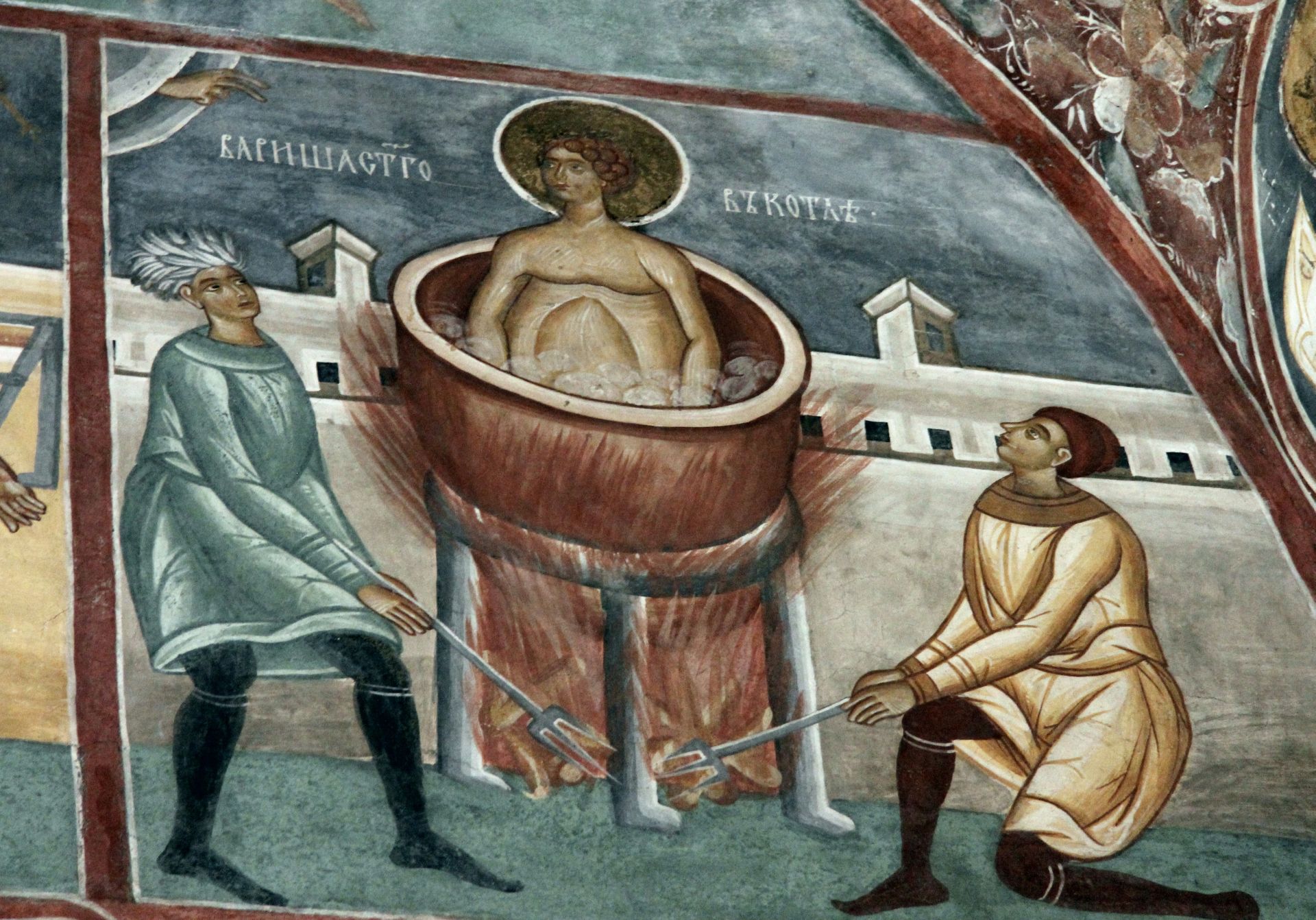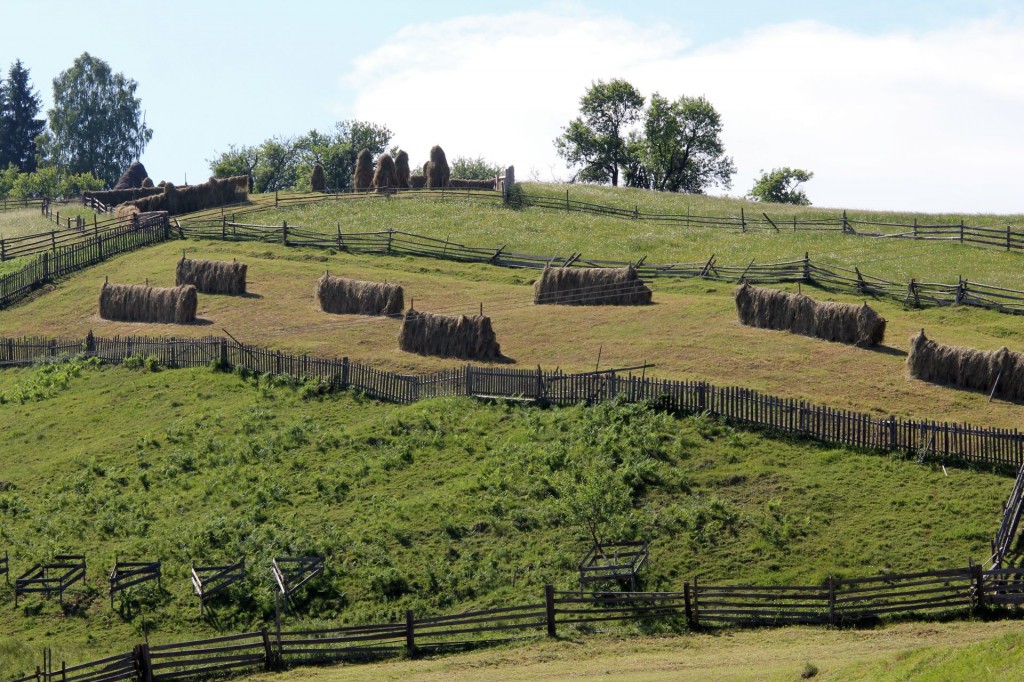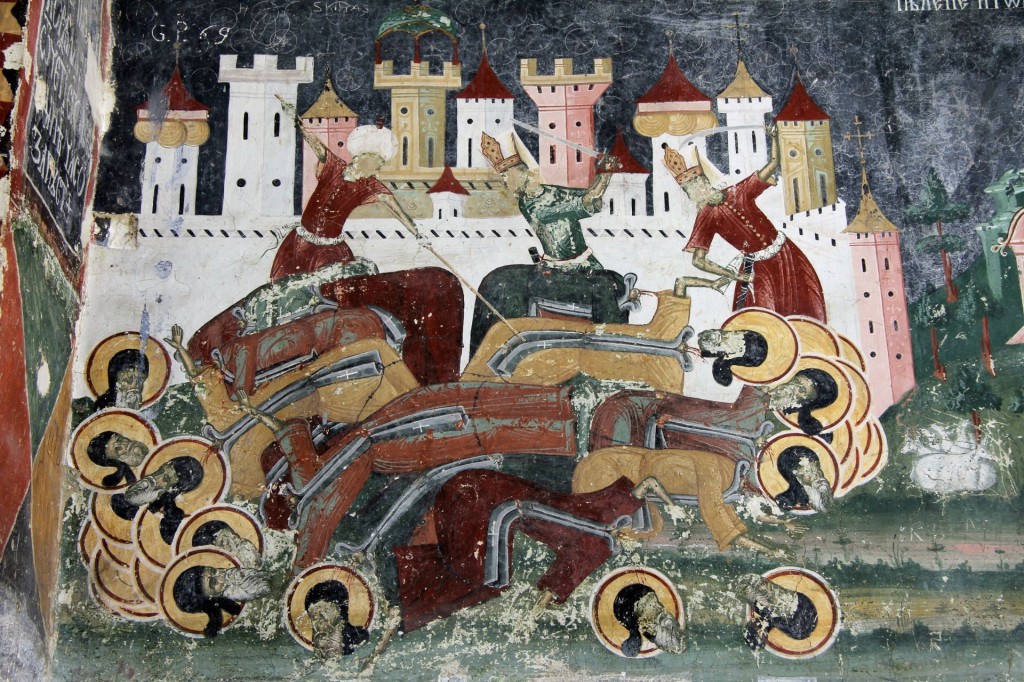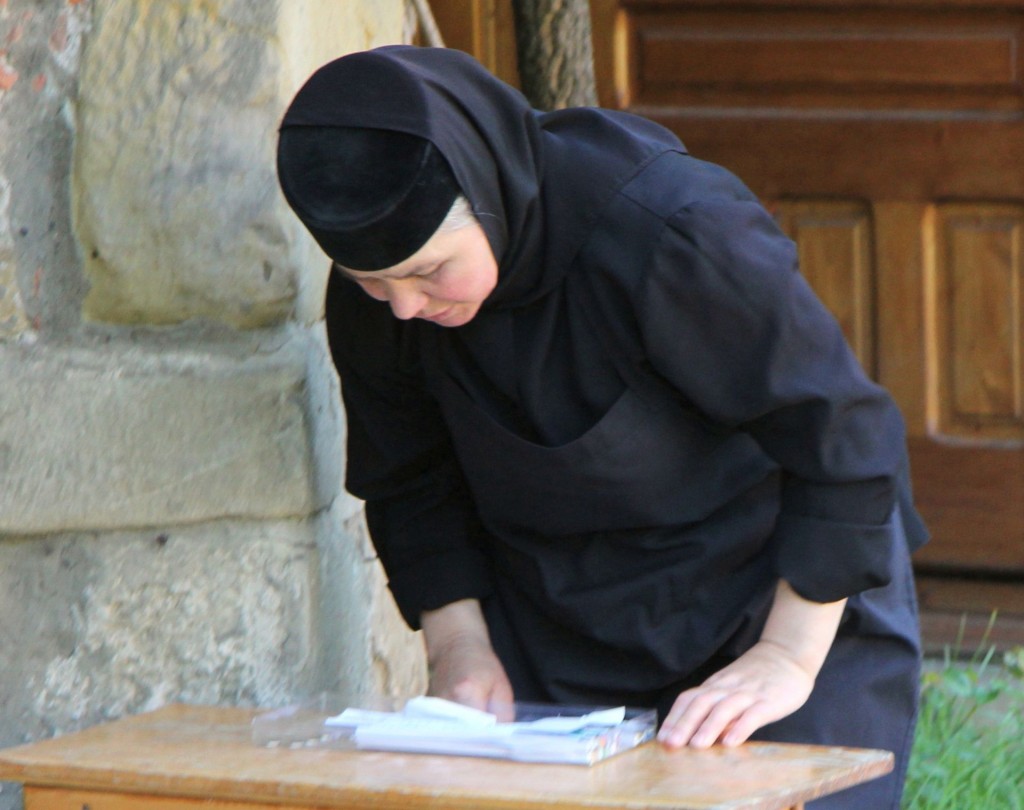One of the highlights of our journey through Romania last summer was the area of Bucovina with its painted monasteries built in the 15th and 16th century, which have earned their place as UNESCO’s World Heritage Sites since 1993. What make these monasteries unique in the world are their painted murals – on both the interior and the exterior walls – in astonishingly well-preserved organic paintings.
It was a pleasure to drive through the hills of Bucovina, a land of unspoiled nature, to the picturesque village of Fundu Moldovei, where we found an excellent camping site. From here we planned to visit four of the seven famous monasteries: Moldovita, Sucevita, Voronet and Humor.
The monastery of Moldovita is located in a wonderful garden, full of flowers and the first impression of the painted church was overwhelming. Nuns with typical hoods were working in the garden and around the church. We were told that the frescoes were first painted on the interior walls, and then extended to the exterior ones. The purposes for such vast scenes were both religious and educational: to promote Orthodoxy and to educate the illiterate. This was a remarkable early illustration of how powerful the visual effect was, even throughout the Medieval Ages.
Apart from the entrance fee, we had to pay an additional amount if we wanted to take photographs of the interior part (which was twice the entrance ticket), but it was really worthwhile.
A real discovery appeared to be the Sucevita monastery. Outside, this monastery looks like a castle, but inside you see a magnificent garden and the frescoes on the exterior walls are stunning. Especially the scenes of the Jacob’s stairs to heaven and hell are impressive.
The interior part of the monastery is under restoration, but the large number of extremely cruel and realistic scenes of saints being tortured and killed in all possible manners is impressive.
Next day we visited the Voronet monastery, famous for its blue colors. Nuns with typical hoods were working in the garden and around the church. We were told that the paint on the walls of this monastery has resisted to all climatic and human interferences for over 400 years, as the painters painted directly on wet lime, upon which they applied color layers that would penetrate deep into the plaster.
The Voronet monastery also showed many cruel scenes. We had the idea as if the painters really enjoyed painting all these different types of torturing. This was the same for the Humor monastery. I have visited many Orthodox monasteries and churches in Eastern Europe, but I have never seen such cruel scenes anywhere. Were they meant to shock the people, or were they a kind of medieval “cartoons”?





